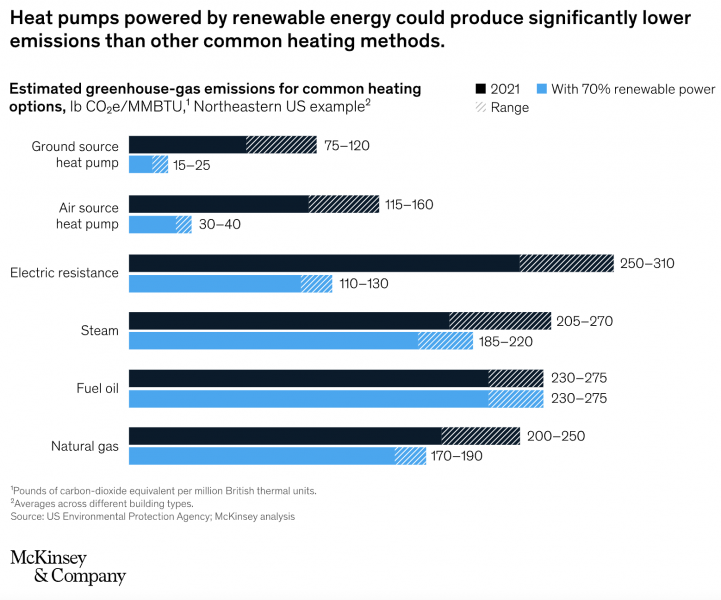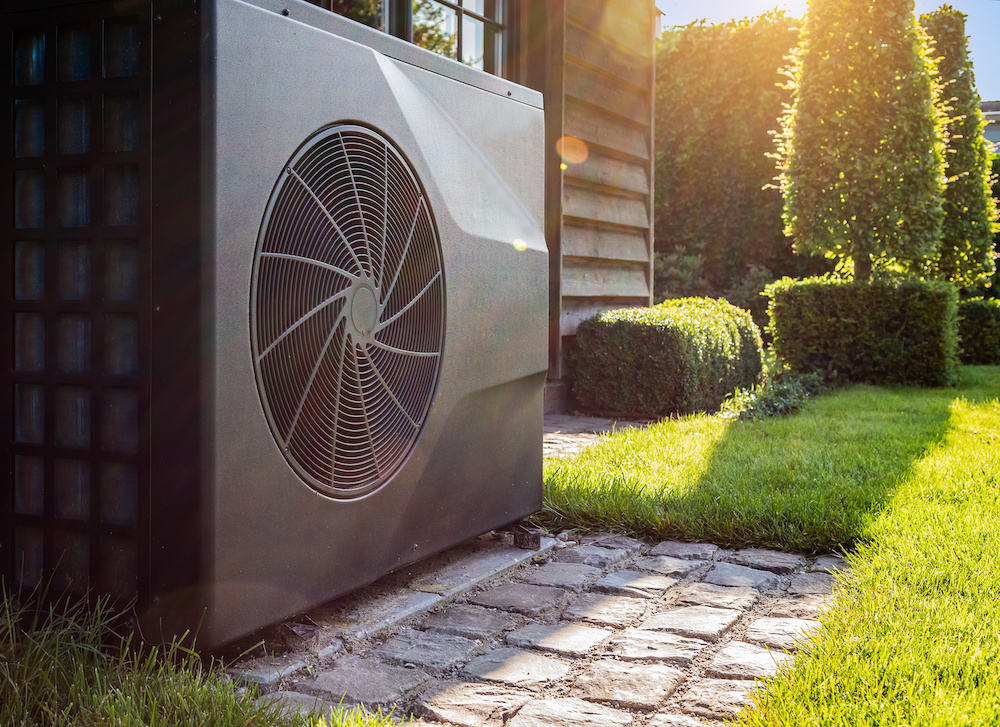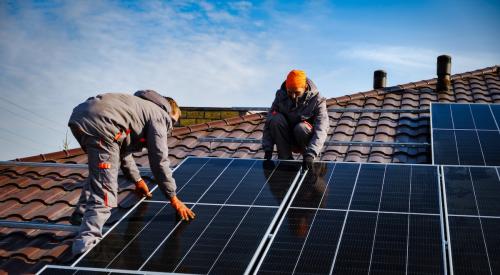Buildings require a lot of energy to build and furthermore to power, which is why researchers the world over are (and have been for decades) so ardently endeavoring to find ways to lower the carbon footprint of residential and commercial structures. A recent report from Mckinsey & Company suggests heat pumps may soon be a preferred means for meeting that end—assuming prices come down over time.

According to McKinsey analysis, heat pumps could constitute approximately 90 percent of new heating unit sales by 2050, compared with 35 percent today.
Building heat has typically been a challenge to electrify at scale because of the high cost and complexity of converting a wide variety of current heating systems (steam, hot water, forced air, to name a few), as well as the relative cost-effectiveness of fossil-fuel energy sources in most cold weather population centers. However, electric heat pumps have become an increasingly effective way for buildings to decarbonize due to operating, equipment, and installation costs becoming more competitive in certain markets, as well as developments in heat-pump technology. (A heat pump uses refrigerant and electricity to transfer heat from outdoor air or the ground to the inside of a building, even in colder temperatures). Today’s models are 2.2 to 4.5 times more efficient than gas furnaces. If implemented worldwide, using heat pumps instead of traditional boilers and furnaces could cut global CO2 emissions by 3 gigatons per year.












